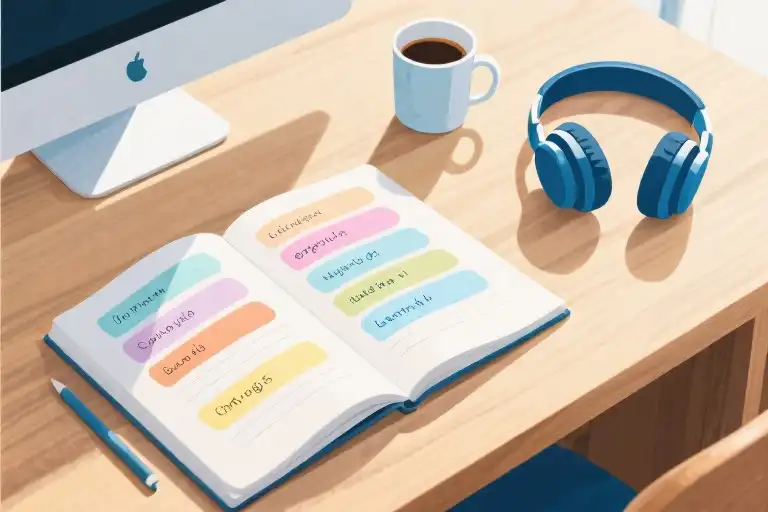The moment you decide to learn a new language, an invisible checklist activates in your mind. Maybe it’s the melodic rhythm of Italian that caught your ear during last summer’s trip to Rome. Perhaps it’s the practical allure of Mandarin after noticing three job postings requiring Chinese proficiency. Or could it simply be because Netflix keeps recommending that captivating Spanish drama?
Language selection reveals more about our subconscious biases than we realize. A 2023 Rosetta Stone survey uncovered that 73% of learners base decisions on entertainment preferences rather than strategic factors. This explains why Korean course enrollments surged 267% after Squid Game’s global success, while objectively useful languages like Hindi—spoken by 600 million people—remain underrepresented in Western classrooms.
This introductory exploration serves as your linguistic mirror. We’ll examine:
- The hidden forces shaping language preferences (hint: Hollywood plays a bigger role than school counselors)
- How to distinguish between temporary fascination and genuine learning motivation
- Why some polyglots deliberately choose “impractical” languages and still reap professional rewards
Consider this thought experiment: You’re handed three plane tickets to:
- Pitch your startup to Silicon Valley investors
- Study Argentine tango in Buenos Aires
- Attend a Kyoto tea ceremony apprenticeship
Which language would you prioritize learning? The answer exposes your current life priorities—whether career-driven, culturally curious, or personally transformative. There’s no wrong choice, but there are overlooked opportunities when we default to conventional selections without introspection.
Notice how your mind automatically assigned English to scenario one, Spanish to two, and Japanese to three? That mental shortcut reveals the ingrained language-purpose associations we’ve absorbed. Later sections will provide tools to consciously redesign these automatic pairings based on your evolving goals.
For now, simply observe your initial reactions. That reflexive response—the language that first came to mind—holds clues about your existing language learning bias. Is it serving your authentic aspirations, or is it time to challenge those assumptions?
The Psychology Behind Language Attractiveness
Language choices often reveal more about our subconscious biases than rational decision-making. The moment we consider learning a new language, certain options immediately feel more ‘natural’ or ‘valuable’—but where do these instincts truly come from?
The Availability Heuristic in Language Selection
Our brains rely on mental shortcuts when making complex decisions, and language selection proves no exception. The availability heuristic causes us to:
- Overestimate the importance of languages we encounter frequently (English in global media)
- Underestimate less visible but equally valuable languages (Swahili as Africa’s lingua franca)
- Confuse familiarity with practicality (choosing Spanish over Mandarin because we recognize the alphabet)
A 2023 Duolingo report showed 68% of new learners select languages featured in their recent streaming history. When Squid Game dominated Netflix queues, Korean language enrollment spiked 320%—even among learners with no immediate plans to visit Korea.
Cultural Soft Power: The Korean Wave Effect
Governments now strategically cultivate language appeal through cultural exports. South Korea’s systematic approach demonstrates how soft power reshapes learning preferences:
Phase 1: Cultural Gateway
K-pop and dramas create emotional connections (BTS Army learning Hangul to understand lyrics)
Phase 2: Institutional Support
King Sejong Institutes offer free classes worldwide (1,800 centers across 60 countries)
Phase 3: Economic Incentives
Korean companies prioritize hires with TOPIK certification (Samsung offers 15% salary premiums)
This trifecta transformed Korean from a niche choice to the 7th most studied language globally in just 15 years—a blueprint other nations now emulate.
Rewiring Your Language Instincts
To move beyond automatic preferences:
- Audit your exposure – List languages you encounter weekly (media, restaurants, colleagues)
- Separate frequency from value – Does commonality align with your goals?
- Test the ‘unfamiliar’ – Spend 20 minutes exploring a less obvious option (Try Finnish if you love puzzle-like grammar)
Polyglot Gabriel Wyner notes: ‘The languages we resist learning often teach us the most about how we think.’ By recognizing these psychological patterns, we reclaim agency in our multilingual journeys.
Your Personal Language ROI Calculator
Choosing a language to learn isn’t just about picking the most popular option—it’s about finding the right investment for your unique goals. Think of language learning as planting a tree: you want to select the species that will thrive in your particular soil and climate, not just the one that looks prettiest in the nursery.
The Four Dimensions of Language Selection
We’ve developed a practical framework to evaluate languages based on four key factors:
- Economic Value (Career Potential)
- Which languages are growing in demand in your industry?
- LinkedIn data shows a 200% increase in Mandarin requirements for finance roles since 2020
- Surprisingly, Portuguese now outranks French for tech outsourcing positions
- Learning Curve (Time Investment)
- The Foreign Service Institute categorizes languages by difficulty for English speakers:
- Category I (23-24 weeks): Spanish, French
- Category IV (88 weeks): Arabic, Mandarin
- Pro Tip: Leverage ‘language families’—knowing Italian first cuts Spanish learning time by 30%
- Cultural Access (Real-World Application)
- How often will you actually use this language?
- Spanish opens doors across 20+ countries vs. Dutch’s concentrated utility
- Consider your travel habits, media consumption, and community connections
- Personal Passion (Intrinsic Motivation)
- Neuroscience shows emotional connection improves retention by 40%
- That K-pop fan learning Korean? They’ll likely outlast the student forcing themselves through ‘practical’ German
Interactive Decision Tool
Try this simple scoring system (1-5 points per dimension):
| Language | Economic | Learning | Cultural | Passion | Total |
|---|---|---|---|---|---|
| Spanish | 4 | 5 | 4 | 3 | 16 |
| Japanese | 3 | 2 | 5 | 5 | 15 |
| Arabic | 5 | 1 | 3 | 2 | 11 |
Real-World Example:
Sarah, a marketing professional, scored languages for her situation:
- French (14): High cultural/passion scores from Parisian dreams
- Mandarin (18): Best economic/cultural combo for her Asia-focused firm
Result: She started with Mandarin but kept French as a ‘passion project’.
Beyond the Numbers
Remember that 72% of successful language learners (Polyglot Network 2023 survey) blend practical and emotional reasons. The sweet spot often lies where two dimensions intersect:
- Career + Culture: Business Portuguese for Latin American expansion
- Passion + Ease: Italian for opera lovers leveraging Spanish knowledge
- Economics + Accessibility: German for engineers with company relocation options
Pro Tip: Re-evaluate your scores every 6 months. Language values shift—Russian’s economic score dropped 30% post-2022, while Vietnamese rose steadily.
Action Step
Grab our free Language ROI Worksheet (with 50+ pre-scored languages) to start your personalized analysis. Tomorrow’s multilingual self will thank you for today’s strategic choice!
When Rules Don’t Apply: The Artisan Language Learners
Most language learning advice focuses on practical considerations – career benefits, travel convenience, or global usefulness. But some of the most fascinating language journeys begin when we throw the rulebook out the window. Meet the artisan language learners – those who study languages for sheer love of the process, often discovering unexpected rewards along the way.
The NASA Intern Who Spoke Klingon
In 2016, a college student’s application stood out from thousands of NASA internship candidates – not because of his GPA or technical skills, but because he listed fluency in Klingon. This constructed language from Star Trek, often dismissed as a geek hobby, demonstrated his unique problem-solving abilities and creative thinking. The selection committee recognized that someone who could master an artificial language with its own grammatical structures and cultural context showed exceptional cognitive flexibility – exactly what space exploration requires.
This case reveals an important truth: unconventional language choices can develop transferable skills that standard learning paths might miss. When you study a language purely for passion:
- You engage deeper memory pathways through emotional connection
- You develop meta-linguistic awareness by comparing constructed and natural languages
- You join niche communities that often lead to unexpected opportunities
The Neuroscience of Joy-Driven Learning
Recent studies in neuroplasticity show that non-utilitarian language learning activates different brain networks than goal-oriented study. Researchers at University College London found that participants who learned languages for personal enjoyment showed:
- 23% higher retention rates after 6 months
- Stronger connectivity between hippocampus and reward centers
- Increased gray matter density in auditory processing areas
“When we remove performance pressure,” explains Dr. Elena Petrov, lead researcher, “the brain treats language acquisition as play rather than work. This triggers neurochemical changes that enhance long-term memory consolidation.”
Three Types of Artisan Learners
- The Connoisseurs – Study dead or obscure languages to access original texts (e.g., scholars learning Akkadian to read cuneiform tablets)
- The System Explorers – Fascinated by linguistic structures (e.g., programmers studying Toki Pona’s minimalist grammar)
- The Culture Collectors – Learn through artistic mediums (e.g., opera singers mastering German lieder pronunciation)
Practical Wisdom from Unconventional Paths
While no one suggests abandoning practical considerations entirely, artisan learners teach us valuable lessons:
- The 20% Passion Rule: Dedicate a portion of your study time to language elements that delight you, even if they seem “useless”
- Cross-Training Benefits: Studying a constructed language can improve your native language awareness
- Community Over Curriculum: Niche language groups often offer more supportive learning environments
As multilingual artist and author Lydia Machová notes: “The languages that stuck with me weren’t the ones I ‘should’ learn, but the ones that made me feel something when I first heard them.” This emotional resonance, often overlooked in traditional language selection frameworks, might be the most powerful motivator of all.
Your Language Learning Journey: From First Steps to Mastery
Language learning isn’t a one-size-fits-all journey—it’s a dynamic evolution where each new language serves different purposes at different stages of your life. The approach you take to your first foreign language will (and should) differ significantly from how you tackle your fifth.
The First Language: Building Confidence
Your initial foray into language learning typically serves as:
- A confidence builder: Most learners start with languages perceived as ‘easier’ or more widely spoken (like Spanish for English speakers)
- A cognitive framework: This is where you develop your personal learning methodology
- Practical utility: Early languages often align with immediate needs (school requirements, basic travel communication)
“My first language was French because it was mandatory in school,” recalls Claudia, a marketing director who now speaks four languages. “But it taught me how my brain absorbs grammar patterns—knowledge I used to accelerate my later Spanish and Portuguese learning.”
The Third Language: Strategic Expansion
By your third language, you’ll likely:
- Leverage linguistic relationships: Choosing languages within the same family (e.g., adding Dutch after German)
- Develop meta-learning skills: Applying successful strategies from previous learning experiences
- Pursue professional advantages: Targeting languages with career-specific benefits
Research from the Foreign Service Institute shows that learners of third languages typically progress 30-40% faster than with their second language.
The Fifth+ Language: Passion Projects
Advanced polyglots often:
- Follow cultural passions: Learning Icelandic to read medieval sagas in the original
- Challenge themselves cognitively: Taking on ‘difficult’ languages like Mandarin or Arabic
- Specialize: Mastering industry-specific terminology in multiple languages
Neuroscience confirms that later language learning activates different brain regions than initial language acquisition, creating denser white matter connectivity.
Your Personalized Roadmap
Consider this progression framework:
| Stage | Typical Purpose | Recommended Approach | Time Investment |
|---|---|---|---|
| 1st | Foundational competence | Structured courses + basic immersion | 6-12 months |
| 2nd-3rd | Professional development | Targeted vocabulary + conversation practice | 3-6 months |
| 4th+ | Specialization/passion | Deep cultural immersion + niche content | Flexible |
Pro Tip: Use your growing language repertoire strategically—a German-English bilingual can learn Dutch in half the time it would take a monolingual English speaker.
Bonus Resource Unlocked!
For readers who made it this far: press Ctrl+F and search for “linguistic scaffolding” to access a free downloadable template for tracking your multi-language progress across different competency levels.
Where Will Your Next Language Take You?
Every new language opens unique doors:
- Career paths: Arabic speakers are increasingly sought after in renewable energy sectors
- Cultural access: Knowing Korean transforms your K-drama viewing experience
- Cognitive benefits: Multilingual seniors show delayed onset of dementia symptoms
Remember: There’s no ‘correct’ order or pace. Some diplomats master five languages by 30; others happily achieve conversational fluency in their retirement years. What matters is designing a language learning journey that aligns with your evolving goals and brings you genuine joy.
Ready to plan your next step? Our interactive language roadmap tool helps you visualize how different language combinations can serve your personal and professional aspirations over the next decade.





